
# 3190n FDC - 2000 33c Celebrate the Century - 1980s: Personal Computers
33¢ Personal Computers
City: Kennedy Space Center, FL
Quantity: 6,000,000
Printed By: Ashton-Potter (USA) Ltd
Printing Method: Lithographed
Perforations: 11.5
Color: Multicolored
The World Wide Web
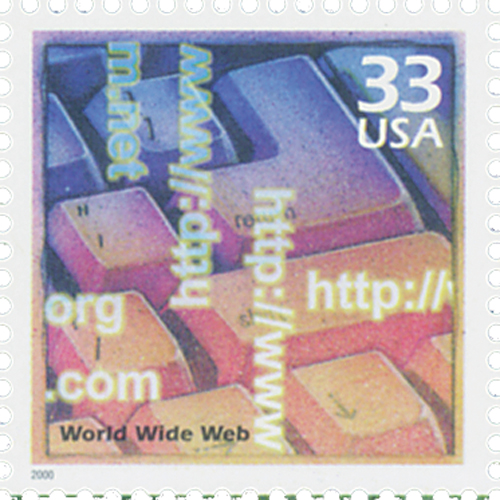
On August 6, 1991, Tim Berners-Lee published the first-ever website, heralding the start of the world wide web. The web has grown to over 1.8 billion websites today, and continues to grow every day.
The creator of that first website was British computer scientist Tim Berners-Lee. In the 1980s, he worked at CERN (Conseil Européen pour la Recherche Nucléaire or European Organization for Nuclear Research). Berners-Lee grew concerned about the state of CERN’s files. They had thousands of researchers around the world working on different projects, but there was no easy way to access them all. As he later recalled, “In those days, there was different information on different computers, but you had to log on to different computers to get at it. Also, sometimes you had to learn a different program on each computer.”
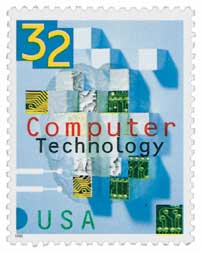
Berners-Lee began brainstorming a way to connect all these researchers and in March 1989, submitted a proposal to his bosses at CERN. He had conceived of a system that would use hypertext to connect to documents on different computers connected to the internet. The internet had been developed from military computer time-sharing in the 1960s. Hypertext, which was also developed in the 1960s, is a system that links clickable text and graphics.
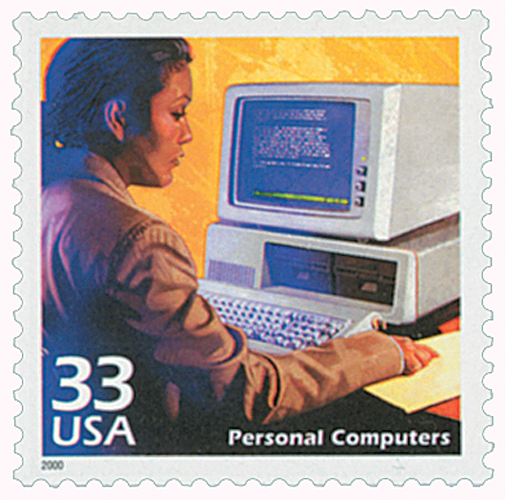
Berners-Lee’s boss said his idea was “vague but exciting,” but didn’t accept the proposal. So Berners-Lee joined forces with engineer Robert Cailliau to improve his proposal. It was accepted in 1990 and Berners-Lee began working on it. He initially called it Information Management, but tried out other names such as Mine of Information and Information Mesh, before choosing WorldWideWeb.
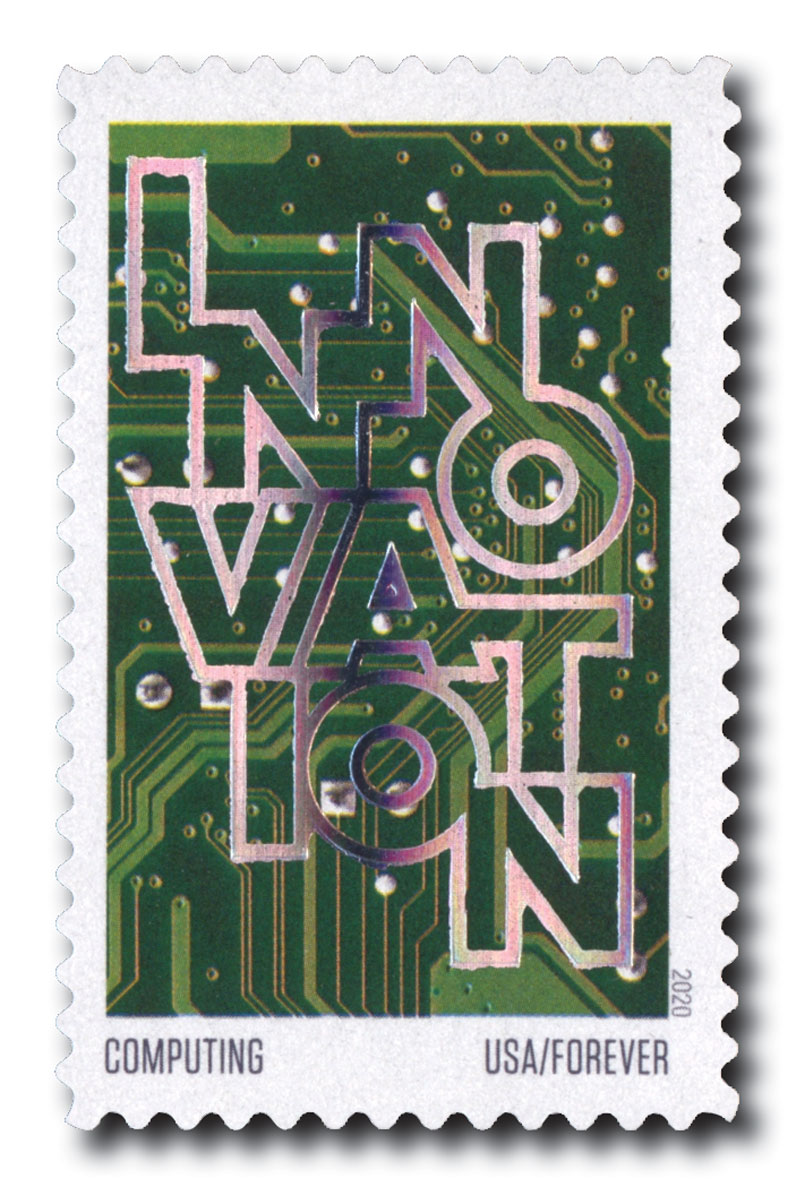
Berners-Lee made significant progress by the end of 1990. He developed several technologies that facilitated the World Wide Web. These included Hypertext Markup Language (HTML), used to create web pages; Hypertext Transfer Protocol (HTTP), the rules that dictate how data is transferred across the web; and Uniform Resource Locators (URLs), the web addresses used to locate web pages. Berners-Lee also created his own browser and web server.
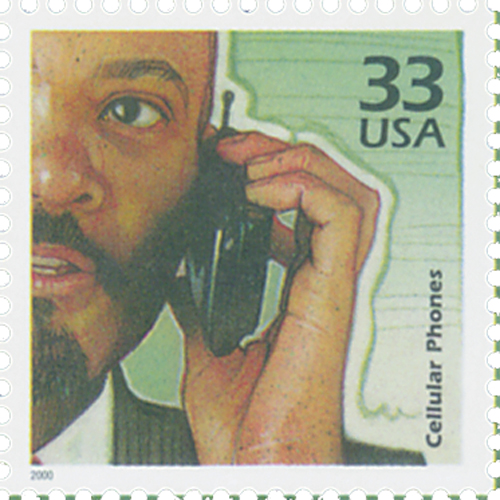
Berners-Lee released his web to researchers in January 1991. Then on August 6, 1991, he posted the world’s first website available to the public, http://info.cern.ch. The link still works today and leads to Berners-Lee’s original page as well as the history behind the web and CERN.
CERN suggested Berners-Lee patent his web technology, but he wanted it to be free and open to the world, so it could grow and improve quickly. He later said, “Had the technology been proprietary, and in my total control, it would probably not have taken off. You can’t propose that something be a universal space and at the same time keep control of it.”
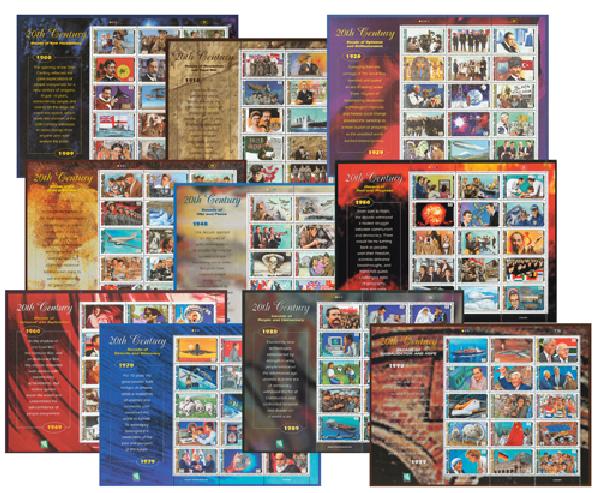
In 1993, the University of Illinois’s National Center for Supercomputing Applications unveiled Mosaic, the first widely popular public web browser. Popular websites still running today soon followed, including Yahoo (1994), Amazon (1995), eBay (1995), and Google (1998).

Berners-Lee left CERN in 1994 to work at the Massachusetts Institute of Technology. There he founded the World Wide Web Consortium, an international organization that sets the standards for the web. He was later knighted by Queen Elizabeth II and was named one of Time magazine’s 100 most important people of the 20th century.

Today, there are over 1.8 billion websites and over 5 billion internet users around the world.
33¢ Personal Computers
City: Kennedy Space Center, FL
Quantity: 6,000,000
Printed By: Ashton-Potter (USA) Ltd
Printing Method: Lithographed
Perforations: 11.5
Color: Multicolored
The World Wide Web

On August 6, 1991, Tim Berners-Lee published the first-ever website, heralding the start of the world wide web. The web has grown to over 1.8 billion websites today, and continues to grow every day.
The creator of that first website was British computer scientist Tim Berners-Lee. In the 1980s, he worked at CERN (Conseil Européen pour la Recherche Nucléaire or European Organization for Nuclear Research). Berners-Lee grew concerned about the state of CERN’s files. They had thousands of researchers around the world working on different projects, but there was no easy way to access them all. As he later recalled, “In those days, there was different information on different computers, but you had to log on to different computers to get at it. Also, sometimes you had to learn a different program on each computer.”

Berners-Lee began brainstorming a way to connect all these researchers and in March 1989, submitted a proposal to his bosses at CERN. He had conceived of a system that would use hypertext to connect to documents on different computers connected to the internet. The internet had been developed from military computer time-sharing in the 1960s. Hypertext, which was also developed in the 1960s, is a system that links clickable text and graphics.

Berners-Lee’s boss said his idea was “vague but exciting,” but didn’t accept the proposal. So Berners-Lee joined forces with engineer Robert Cailliau to improve his proposal. It was accepted in 1990 and Berners-Lee began working on it. He initially called it Information Management, but tried out other names such as Mine of Information and Information Mesh, before choosing WorldWideWeb.

Berners-Lee made significant progress by the end of 1990. He developed several technologies that facilitated the World Wide Web. These included Hypertext Markup Language (HTML), used to create web pages; Hypertext Transfer Protocol (HTTP), the rules that dictate how data is transferred across the web; and Uniform Resource Locators (URLs), the web addresses used to locate web pages. Berners-Lee also created his own browser and web server.

Berners-Lee released his web to researchers in January 1991. Then on August 6, 1991, he posted the world’s first website available to the public, http://info.cern.ch. The link still works today and leads to Berners-Lee’s original page as well as the history behind the web and CERN.
CERN suggested Berners-Lee patent his web technology, but he wanted it to be free and open to the world, so it could grow and improve quickly. He later said, “Had the technology been proprietary, and in my total control, it would probably not have taken off. You can’t propose that something be a universal space and at the same time keep control of it.”

In 1993, the University of Illinois’s National Center for Supercomputing Applications unveiled Mosaic, the first widely popular public web browser. Popular websites still running today soon followed, including Yahoo (1994), Amazon (1995), eBay (1995), and Google (1998).

Berners-Lee left CERN in 1994 to work at the Massachusetts Institute of Technology. There he founded the World Wide Web Consortium, an international organization that sets the standards for the web. He was later knighted by Queen Elizabeth II and was named one of Time magazine’s 100 most important people of the 20th century.

Today, there are over 1.8 billion websites and over 5 billion internet users around the world.












